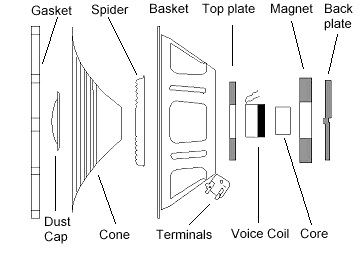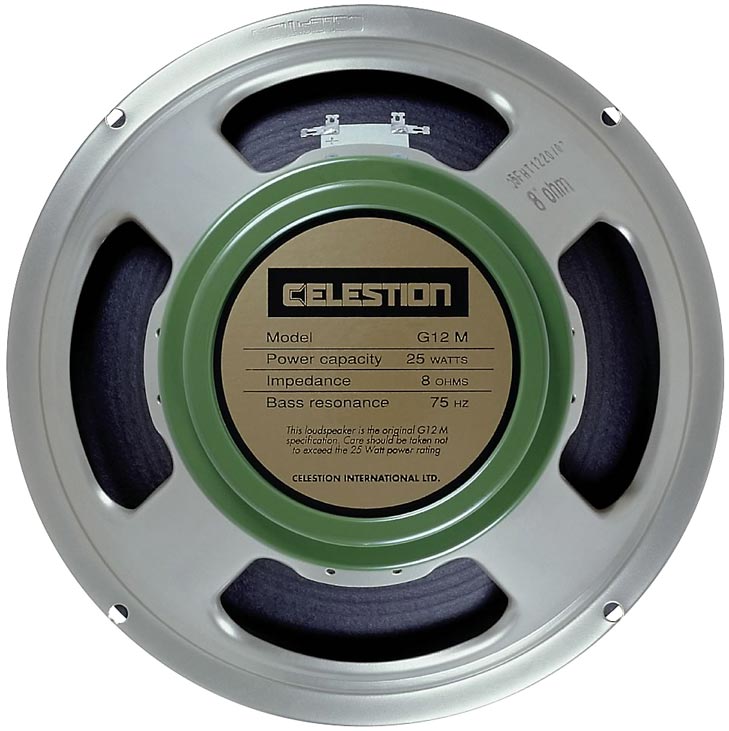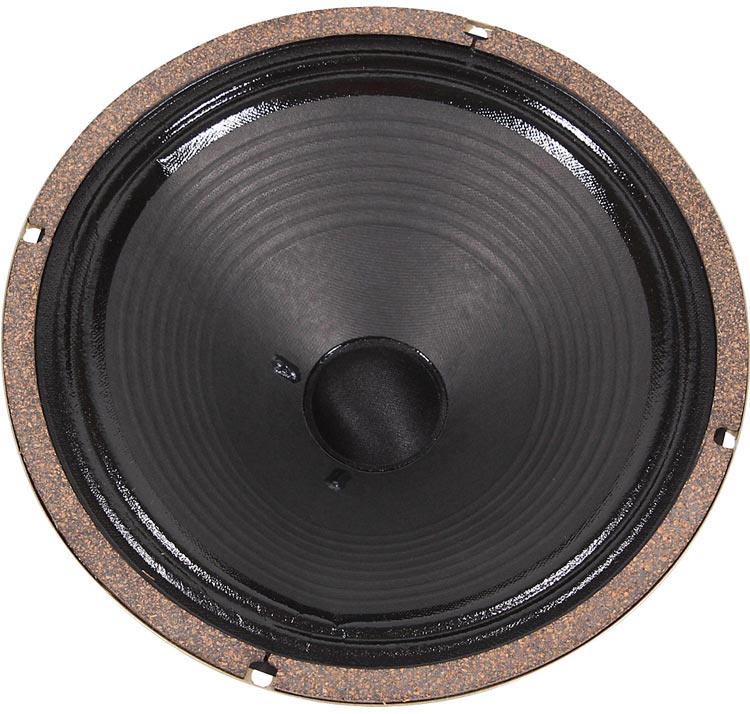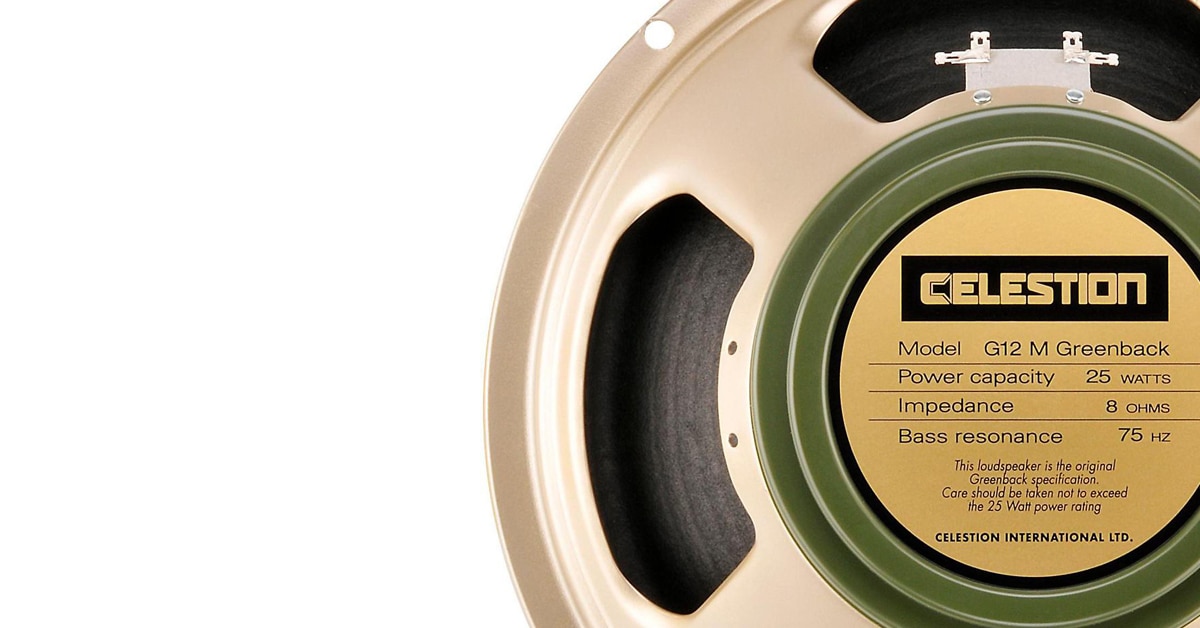The quest to reproduce the magical guitar tones we hear in our heads but somehow can’t quite conjure up from our guitar amps or speaker cabinets is an endless pursuit. As highly subjective as it is, there are probably as many opinions about what constitutes great guitar tone as there are guitarists. And there are even more opinions about how to get it.
Electric guitar tone is a function of a complex of factors in the signal chain starting with the guitar itself, its pickups, strings, tone controls, and subtler elements such as the cable connecting it to an amp.
Let’s not forget the human element either. Your playing technique, the pick you wield, and your pick attack all influence tone. Then there are the countless stompboxes, multieffects processors, outboard preamps, and virtual-instrument devices and software that can impart all sorts of color and character to your sound.
But in the end, its in the amp, and especially its speakers, where the sonic rubber hits the road. That’s where this guide comes in. Whether you’re looking to upgrade your combo or speaker cabinet, or need to replace speakers that have developed shredded cones or cooked voice coils, we’ll help you identify the factors to consider.
Shop the huge selection of guitar amp replacement speakers at Musician’s Friend.
Things to Consider When Swapping Speakers
Apart from the sonic character of a replacement speaker, which we’ll deal with shortly, your main concerns should be impedance and power ratings. You’ll usually want to select from speakers that have similar power rating specs and exactly the same impedance as those you’re replacing.
Another consideration is the mounting bolt pattern. Look for speakers that match the layout of your amp or speaker cabinet mounting holes unless you’re willing to modify your gear.
The type of cabinet or amp housing the speaker’s going into matters also. If the cabinet or amp is open-backed, your choices are pretty wide open. On the other hand, sealed cabinets pose more of a challenge since they’re tuned to match specific speaker characteristics. The “springiness”—how much mechanical movement the speaker’s design permits—needs to match the cabinet’s volume. Bass cabinets that are sealed or ported can be especially tricky. Look for speakers designed for sealed-cab installation. You may want to consult with a guitar amp tech or talk to one of the Gear Advisers in order to find a good match.
You can use different speakers in multi-speaker cabinets and amps. However, they need to have similar efficiency ratings or the more efficient speaker will override the sound of the other, canceling out any hybrid effect you’re looking for.
Learn more about speaker wattage, efficiency and more with our helpful tech tip.
Things That Give Speakers Their Character
There are many great stories about guitarists going to extremes to achieve the tones they want. Famously, Dave Davies slit the speaker cone in his Elpico amp with a razor blade to get the hairy, distorted fuzz tone that gave the Kinks song “You Really Got Me” its signature sound. Thankfully, with the huge range of distortion and fuzz pedals available today, and the tendency of smaller amps to break up when driven hard, you don’t have to go those extremes. The right speaker in the right combo or enclosure can help you get there by taking advantage of the speaker characteristics we discuss next.
Inefficiency: That fat and warm harmonic distortion typical of low-powered tube amps that tone connoisseurs adore is the result of a technical limitation: tubes when overdriven and saturated actually create a pleasingly distorted sound.
Some of that desirable distortion is also the result of speaker imperfection. Counter-intuitively, limiting frequency response in speakers makes electric guitars sound better. The inherent mechanical inefficiency of the speakers used in guitar amplification coupled with their relatively narrow frequency range help filter out grittier, less musical distortion. That’s the reason most guitar combos and speaker cabs omit tweeters whose high-frequency response would perfectly reproduce brittle treble frequencies that are a part of a distorted signal.
Size: The 12” speakers found in many guitar combo amps and speaker cabinets are popular because they deliver a wider range of sound, particularly in the bass and low-mid frequencies. However many guitarists prefer 10” speakers for their tighter mid-range and overall punchier sound.
Similarly, many bassists prefer a 4 x 10 speaker cabinet over a 4 x 12 configuration, due to the tight mids and bass response that work well with slapping and popping techniques. Bassists looking for fatter, more rounded tone will usually go with 12” or 15” speakers in various configurations, some even choosing 18” drivers for teeth-rattling bass response. Of course, many bass rigs also include a subwoofer in order to reproduce the lowest portion of the instrument’s range.
The smaller 8” and 10” speakers found in practice combos and low-power tube combos don’t have the bass heft of larger speakers, but they can still produce a satisfying sound depending on the music you play and the tone you’re going for. Small combos are often close-miked on stage with the output sent to a PA. In the studio, smaller tube amps with 10” speakers are often used for a more controlled guitar sound. As we’ll see in the next section, their ability to distort at lower volume levels is a plus in some cases.
Wattage Rating: A big part of the equation here is how much breakup (pleasing distortion) you want at what volume levels. A speaker with a lower wattage rating will break up at lower volumes—an ideal situation in the studio or when playing relatively small spaces. The classic combination of a Marshall 50-watt tube head driving a 25-watt Celestion speaker will produce satisfying breakup at relatively low volume settings. On the other hand, a speaker with a higher wattage rating may be the right solution if you’re looking for a cleaner, distortion-free sound.
Speaker Design: The materials and design elements of the speaker have a big influence on tone and performance.
Most speaker cones are made of heavy paper-like material, sometimes reinforced with other fibers. How readily the cone flexes and moves back and forth determines at what point its output begins to break up. Generally, thinner cones break up at lower volumes than thicker types, and also sometimes have a more compressed sound. Cones that have a metal dust cap at their center tend to have a slightly brighter, more brittle sound.

Some cones incorporate molded concentric circles that allow the center of the cone to move more independently from the outer portion, improving higher-frequency reponse. Low-frequency response is both a function of the cone’s design and how well it’s damped—that is how well the speaker’s excursions when reproducing bass sounds are controlled by the cone material and the surround. Cones that have a limited excursion range, sometimes referred to as being tightly damped, will produce a tighter, punchier bass sound. Conversely, cones that are looser and travel further under heavy signal loads will produce looser bass notes.
Speakers with high power ratings generally have larger voice-coil diameters Their additional mass tend to produce a more muscular bass response while also causing the higher frequencies within the speaker’s range to roll off.
Likewise, heavier magnets contribute to pronounced bass response. But size isn’t the only factor. The power of a magnet is also determined by the material from which it’s made. Vintage speakers often employ ceramic magnets. Alnico magnets generate stronger magnetic fields while also adding heft and often imparting a slightly more compressed sound. Magnets made of neodymium also produce strong magnetic fields while having the advantage of reduced weight—a significant factor in the portability of multi-speaker cabinets.
Because the overall sound of a speaker is a combination of many design and material choices, talking about things like an “alnico magnet sound” can be pretty meaningless.
“British” vs “American” Tone
During the 1950s and midway through the 1960s, American guitar amp makers ruled supreme. Characterized by the brighter hard-edged sound of vintage guitar combos from the likes of Fender, surf, country, and rock ‘n’ roll sounds were trebly and detailed. The earlier U.S.-made combos and cabinets had speakers often manufactured by JBL, Jensen, or Eminence that have become associated with that brighter “American” sound.
As rock guitar sounds grew increasingly “heavier” in the wake of the British Invasion, guitarists started seeking out gear that would generate more harmonically rich distortion. British amp makers such as Marshall, Vox, and Hiwatt complied, often fitting their speaker cabs and combos with Celestion speakers, thus giving birth to the “British Sound”. These speakers had relatively low power ratings, that when combined with the distortion inherent the tube amps that drove them, produced creamy, musically satisfying distortion.


If you’re looking for classic late ‘60s British tone, the Celestion G12M Greenback is one of the most popular choices.
The Greenback can also generate plenty of clean bite with the right signal chain.
There are no rules where tonal character is concerned. Buy the speaker that produces the sound you’re looking for. If you’re unsure, try to audition multiple models. Fellow musicians can be a great resource—especially if they’ll let you plug into their guitar or bass rigs to get a sense of how your instrument will sound using the same speakers. The expert Gear Heads at Musician’s Friend will also help guide you to the speaker that makes sense for your music and budget. Give them a call at (800) 449-9128.
Speaker Re-coning vs. Replacement
At one time it was fairly common to refurbish speakers with fried voice coils and disintegrating cones. That practice fell out of favor, but it has been staging a comeback in recent years, especially where prized vintage amps are concerned.
Since the original speaker was carefully selected to match the enclosure and/or amp in a guitar or bass combo, you can make a strong argument for re-coning versus swapping a driver out for a new speaker that can drastically alter the amp’s sound. If you love the sound of your combo or speaker enclosure, re-coning could be the way to go. The process usually entails replacing all the components that tend to fail over time. These include the cone itself, the voice coil, surround, and dust cap. Usually the pole piece, basket, top plate, and magnet do not require replacement.
The trick in re-coning is to find a competent speaker technician who can access an exact replacement for the original speaker if it’s still available. Major brands such as Eminence and Celestion still produce many older models and manufacture newer versions that emulate their vintage designs making them suitable replacements.







































































































































